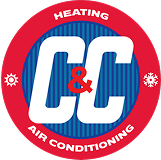Many changes to air conditioning systems are in effect this year, so what does that mean for you? On Jan. 1, 2025, HVAC manufacturers began following new EPA rules aimed at reducing the impact of air conditioning on the environment. These rules require the use of refrigerants with a lower Global Warming Potential (GWP), along with other changes that will offer increased environmental protection and make units more energy efficient.
Lowering the GWP of AC
Prior to 2025, most air conditioners used older refrigerant formulas, like R-410A, which possess a high GWP. Products with a high GWP contribute to the depletion of our ozone layer when released. The change stems from a global effort to mitigate the contribution by these products to global warming and ozone depletion. The newer options, like R-454B and R-32, are more environmentally friendly with much lower GWP.
What does a lower GWP mean for air conditioning?
These new refrigerant formulas release much less dangerous gas emissions into the atmosphere, resulting in their lower GWP. Homeowners who invest in a new air conditioning unit and are concerned with climate change can feel comfortable during a sweltering summer without contributing to the rising heat.
As manufacturers retool their factories to produce units that use the new refrigerants, the need for different materials, an upgraded design and additional training will make their price for each unit higher. This increase will inevitably be passed on to consumers,
So How Can This Upgrade Save You Money?
Although new HVAC units may see an initial price increase, due to new manufacturing methods and the training required to build, install and maintain them, there will be operational cost savings over time. New systems running with R-32 or R-454B will be more energy efficient than older models.
Also, new air conditioning units will have more integrated smart technology. Their advanced sensors and connectivity offer users more precise control and monitoring. This allows better oversight of energy use to reduce waste and increase efficiency.
Another 2025 update is to the Seasonal Energy Efficiency Ratio (SEER) rating, which measures cooling efficiency. Now referred to as SEER2, most regions now require a minimum SEER2 rating of 15, a higher efficiency requirement than in years past. The new mandate compels manufacturers to design systems that use less energy, while maintaining cooling capacity.
Looking Ahead: 2025 and Beyond
The combination of eco-friendly refrigerants, advanced smart technology, and improved energy efficiency ratings will result in significant operational cost savings. While these new units may have a higher upfront cost, the long-term savings on energy bills and the peace of mind knowing you’re contributing to a healthier planet make the investment worthwhile. Over time, homeowners will find that the benefits—both financial and environmental—will far outweigh the initial expense.
At C & C Heating and Air Conditioning, our expert team specializes in HVAC installation and maintenance. We offer a wide range of air conditioning solutions, from heat pumps to ductless mini-splits, and carry top-quality brands like Carrier and Trane. If you’re looking for reliable HVAC services in Roseville, Macomb County or the Greater Detroit area, we’re here to help. Contact us today to learn more about how we can assist you in making the switch to a more energy-efficient home.






